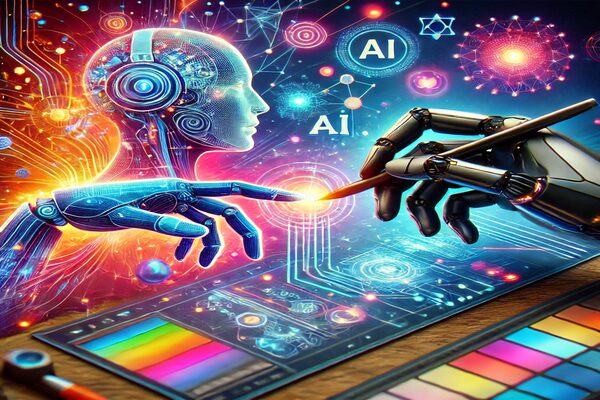In the ever-evolving digital landscape, the integration of AI for design accessibility tools is transforming how we create and interact with digital content. These tools are making design more inclusive and accessible to everyone, including individuals with disabilities. As technology advances, AI-driven solutions are providing innovative ways to enhance user experience by ensuring that designs are not only aesthetically pleasing but also universally accessible.

The Rise of AI in Design
The incorporation of AI in the design sector has become a game-changer. It is reshaping how designers approach accessibility, allowing them to create more inclusive environments with ease. By automating certain tasks, AI empowers designers to focus on creativity and innovation without compromising on accessibility standards. This is particularly important as the demand for digital accessibility continues to grow.
Understanding Design Accessibility
Design accessibility refers to creating digital content that can be easily accessed and understood by all users, regardless of their abilities or disabilities. This includes considerations for visual, auditory, cognitive, and motor impairments. With AI-powered accessibility tools, designers are now able to address these needs more efficiently and effectively.
Visual Accessibility
For users with visual impairments, AI tools can assist in optimizing color contrast, text size, and screen readers. These tools can automatically adjust design elements to improve readability and navigation.
Auditory Accessibility
AI can generate subtitles and transcripts for audio and video content, making it accessible for those with hearing impairments. This is crucial for ensuring that all users have equal access to information.
Cognitive Accessibility
AI tools can simplify complex information by breaking it down into manageable pieces, using clear language and intuitive navigation to assist users with cognitive disabilities.
Motor Accessibility
For users with motor impairments, AI can facilitate voice commands and alternative navigation methods, enhancing their ability to interact with digital content.
Key Features of AI Accessibility Tools
AI accessibility tools come equipped with features that cater to various accessibility needs. Some of the key features include:
- Real-time feedback: AI tools can provide instant feedback on accessibility compliance, allowing designers to make necessary adjustments swiftly.
- Automated testing: These tools can automatically test designs for accessibility issues, saving time and ensuring thorough evaluations.
- Personalization: AI can tailor content to individual user preferences, enhancing their experience and engagement.
- Machine learning: Continuous learning from user interactions enhances tool efficiency and effectiveness over time.
Impact on Digital Creators
For digital creators, the integration of AI for design accessibility tools offers numerous benefits. It allows them to broaden their audience reach by ensuring that their designs are accessible to all. Additionally, these tools empower creators to innovate and experiment with new ideas without worrying about accessibility compliance.
Challenges and Considerations
While AI offers remarkable opportunities, there are challenges to consider. Ensuring that AI algorithms are inclusive and free from bias is critical. Designers must also remain vigilant about keeping up with evolving accessibility standards and regulations.
The Future of AI in Design Accessibility
The future of AI in design accessibility is promising. As AI technology continues to advance, we can expect even more sophisticated tools that further enhance accessibility and inclusivity. Designers and developers will have powerful resources at their disposal, enabling them to create more engaging and accessible digital experiences.
Conclusion
In conclusion, AI for design accessibility tools are revolutionizing the way we approach digital design. These tools are essential for creating inclusive environments that cater to all users, regardless of their abilities. As we move forward, embracing AI in design will be crucial for ensuring that digital content remains accessible, innovative, and engaging.

Frequently Asked Questions
What are AI design accessibility tools?
AI design accessibility tools are software applications that use artificial intelligence to ensure that digital content is accessible to users with various disabilities. They help designers create inclusive environments by automating certain tasks and providing real-time feedback.
How does AI improve design accessibility?
AI improves design accessibility by optimizing design elements such as color contrast, text size, and navigation. It also generates subtitles and transcripts for audio content and simplifies complex information for better comprehension.
What is the future of AI in design accessibility?
The future of AI in design accessibility is bright, with advancements leading to more sophisticated tools that enhance inclusivity and accessibility. This will empower designers to create engaging and accessible digital experiences for all users.







